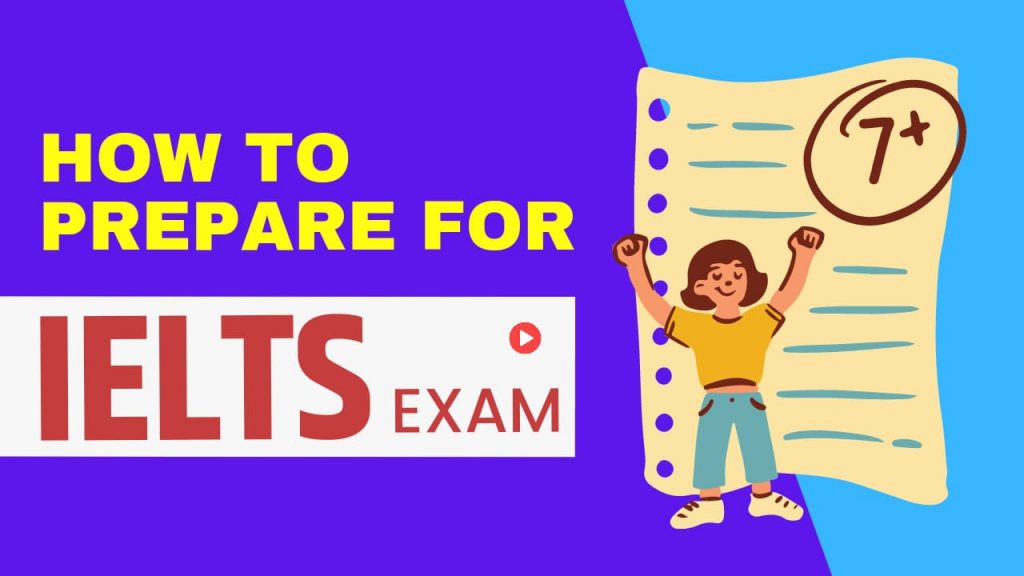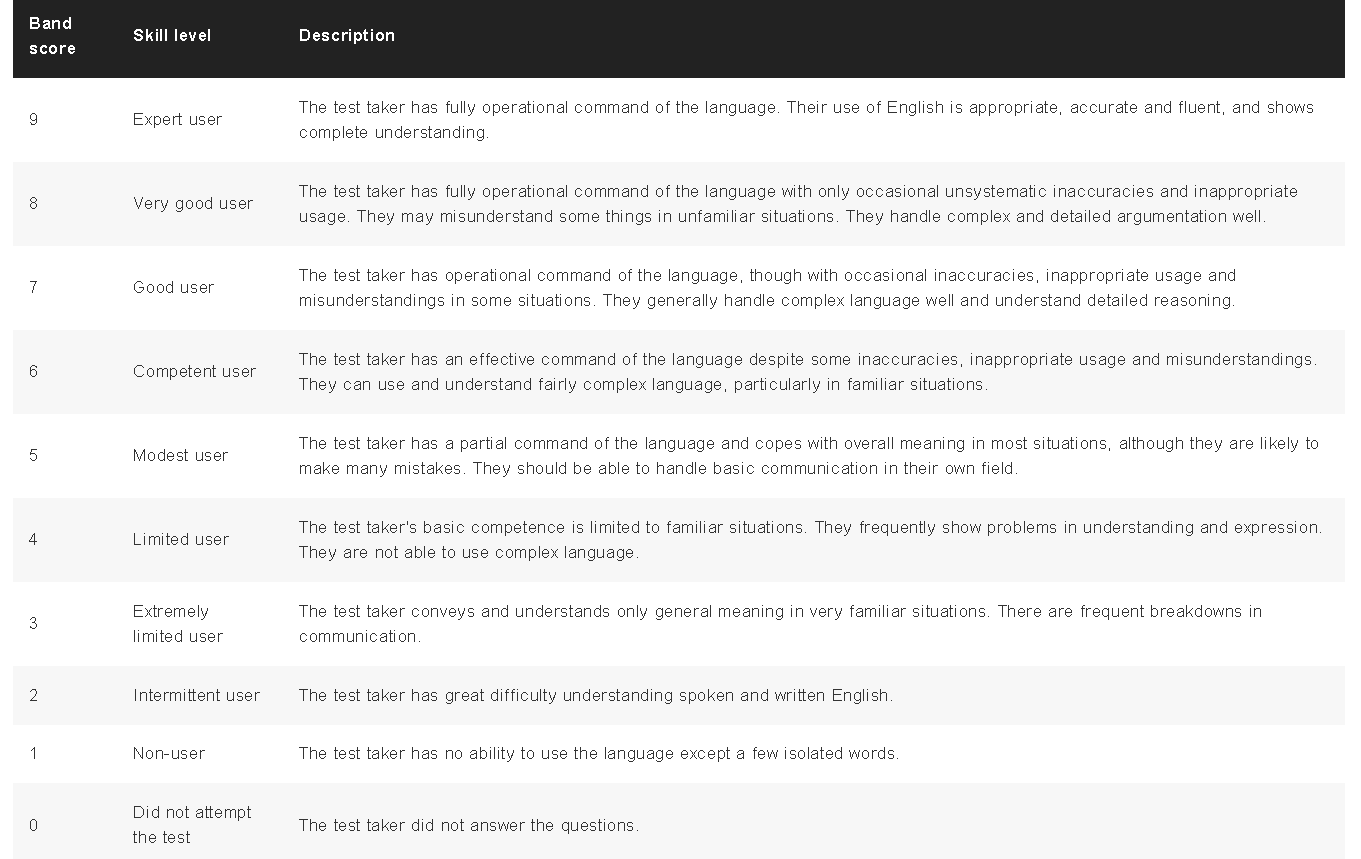IELTS or The International English Language Testing system?
It enables one to work, study or migrate to countries with English as a native language. IELTS assesses the candidate’s English writing, speaking, reading, and listening skills. Based on performance, students get grades on a scale of 1-9.

English is the third most spoken language, and a good grasp of the language has many benefits. It is the most popular test for those wanting to move to Australia, the UK, the US, Canada, New Zealand, etc. A lot of employers, institutes, and immigration bodies accept IELTS.
IELTS Score Scale

The higher you can score in IELTS, the better your understanding and ability to communicate in English. Each body, university, workplace, or institution will have specific score requirements. The score you need will depend on what you are looking to do in the country.
How to prepare for IELTS?
- Understanding the format- There are same Listening and Speaking tests and different Reading and Writing tests for all. The Listening, Reading and Writing sections of all tests are completed on the same day, with no breaks in between them. The duration is 2 hours 45 minutes for the speaking test. It is important to make sure to prepare accordingly.
1. Listening Test
You will listen to four recordings of native English speakers and accordingly will write your answers to a series of questions in 30 minutes.
- Recordings would be as follows:
- conversation between two people set in an everyday social context.
- a monologue set in an everyday social context, e.g. a speech about local facilities.
- conversation between up to four people set in an educational or training context, e.g. a university tutor and a student discussing an assignment.
- monologue on an academic subject, e.g. a university lecture.
This is proof of your ability to understand the language.
2. Reading Tests for IELTS
- Academic Reading Test- This section has 40 questions to test a wide range of reading skills. These include gist reading, reading for main ideas, detail, skimming, understanding logical argument and recognizing writers’ opinions, attitudes and purpose.
This includes three long texts, ranging from descriptive and factual to discursive and analytical. These are taken from books, journals, magazines, and newspapers. They have been selected for a non-specialist audience but are appropriate for people entering university courses or seeking professional registration and the time duration is 60 minutes.
Paper format: Three reading passages with various questions and several task types.
- General Training Reading Test- The section consists 40 question, designed to test a wide range of reading skills. These include reading for gist, reading for main ideas, reading for detail, skimming, understanding logical argument and recognizing writers’ opinions, attitudes and purpose.
This includes extracts from books, magazines, newspapers, notices, advertisements, company handbooks, and guidelines. These are materials you are likely to encounter daily in an English-speaking environment.
Paper format: There are three sections. Section 1 may contain two or three short texts or several shorter texts. Section 2 comprises two texts. In Section 3, there is one long text for 60 minutes.
3. Writing Tests for IELTS
- Academic Writing Test-
Topics are of general interest to, and suitable for, test takers entering undergraduate and postgraduate studies or seeking professional registration. There are two tasks:
A. Task 1- You will be presented with a graph, table, chart, or diagram and asked to describe, summarize or explain the information in your own words. You may be asked to define and explain data, describe the stages of a process, how something works, or describe an object or event.
B. Task 2 – You have to write an essay in response to the point of view, argument, or problem. Responses must be in a formal style.
Paper format: There are two Writing tasks; therefore, both must be completed in 60 minutes.
- General Training Writing Test- Topics of general interest. There are two tasks:
A. Task 1- Write a letter requesting information or explaining the situation you will provide. The letter can be personal, semi-formal, or formal in style.
B. Task 2- You have to write an essay in response to the point of view, argument, or problem. The essay can reflect your personal opinions.
Paper format: There are two Writing tasks to complete and 60 minutes to complete the test.
4. Speaking Test
The speaking section assesses your use of spoken English. Every test is recorded.
Part 1- The examiner will ask you general questions about yourself and a range of familiar topics, such as home, family, work, studies, and interests. This part lasts between four and five minutes.
Part 2 – A card that asks you to talk about a particular topic. You will have one minute to prepare before speaking for up to two minutes. The examiner will then ask one or two questions on the same issue.
Part 3 – Further, they will ask questions about the topic in Part 2 will be. These will allow you to discuss more abstract ideas and issues. This part of the test lasts between four and five minutes.
Paper format: An Oral interview between the test takers’ and the examiner is the speaking test. They record all the interviews.
Use of Sample Papers, mock tests, and IELTS Check progress test at-https://www.ielts.org/for-test-takers/how-to-prepare/ielts-progress-check.
For more info, visit https://www.ielts.org/.
Prepare with Experts like Jahnvi Panwar on our app- Download Dhurina Educational App.










